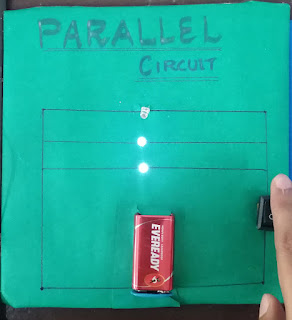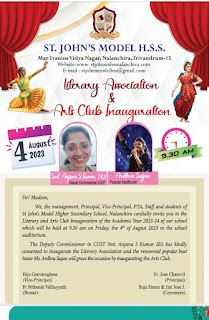Exploring Electrical Circuits: My Journey as a Student Teacher .....working model
As a student teacher in a class full of enthusiastic ninth-graders, I recently embarked on a journey to make the concept of series and parallel connections in current electricity come alive. My mission was clear: to create a working model that would not only teach the theory but also allow my students to experience it firsthand. Armed with LED bulbs, switches, batteries, and a bunch of wires, I set out to create a hands-on learning experience that would light up the minds of my young learners.
Objective:
The primary objective of this experiment was to help students understand the difference between series and parallel connections in electrical circuits and how they affect the flow of current. By building a working model, I aimed to demystify this complex topic and make it accessible to all.
Materials Used:
LED Bulbs (3)
Switches (2)
Battery Holder with Batteries (2)
Connection Wires
Electrical Tape
A Small Wooden Board
The Setup:
To kickstart our project, we needed a solid foundation. We attached a small wooden board to serve as the base for our circuit. Next, we gathered our materials and placed them on the board.
Creating a Series Circuit:
We began with the series circuit. In this setup, we connected the LED bulbs one after the other in a single path. The positive terminal of the battery was connected to the positive leg of the first LED bulb using a wire, and then another wire connected the negative leg of the first LED bulb to the positive leg of the second LED bulb. Finally, the negative leg of the second LED bulb was connected to the negative terminal of the battery. The third LED bulb was set aside for the parallel circuit.
Creating a Parallel Circuit:
To demonstrate a parallel circuit, we connected the third LED bulb separately to the battery. This time, the positive terminal of the battery was directly connected to the positive leg of the third LED bulb, and the negative terminal of the battery was connected to the negative leg of the bulb. We added a switch to control the flow of current in the parallel circuit.
The Experiment:
With both circuits in place, we were ready to conduct our experiment. We switched on the series circuit and observed that when one LED bulb was disconnected, all the bulbs went off. This helped students understand that in a series circuit, if one component fails or is disconnected, the entire circuit is interrupted.
Next, we turned on the parallel circuit. We were able to switch individual bulbs on and off without affecting the others. This demonstrated that in a parallel circuit, each component has its own separate path for the flow of current. Even if one bulb is turned off or fails, the others continue to function.
Discussion and Conclusion:
After conducting the experiment, we held a discussion to recap the key takeaways:
In a series circuit, components are connected end to end, forming a single path for the current. If one component is disconnected, it breaks the circuit, and all components turn off.
In a parallel circuit, components are connected in multiple paths. Each component has its own connection to the power source. If one component is turned off or fails, it does not affect the others.
This hands-on experience allowed students to grasp the concept of series and parallel connections in current electricity better than any textbook explanation could. They left the classroom with a clear understanding of how real-world electrical circuits work, and the smiles on their faces were as bright as the LED bulbs in our model.
As a student teacher, I was thrilled to witness the spark of curiosity and understanding in my students' eyes. This project emphasized the power of experiential learning, and I hope it ignited a lifelong interest in the world of science and electronics for these young minds.


.jpeg)


Comments
Post a Comment